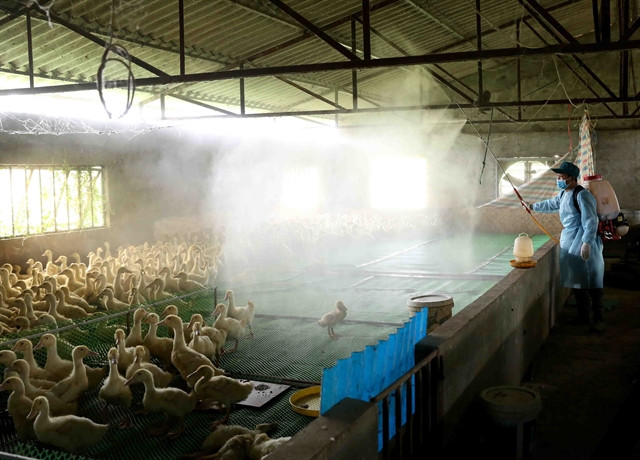
Việt Nam is facing a critical threat of human-to-human avian influenza virus transmission, the Ministry of Health has warned, after two human infections were reported in Cambodia.
The Ministry has cautioned that Việt Nam's current weather conditions are ideal breeding grounds for avian influenza viruses.
The recent announcement by Cambodia of two human cases of H5N1 avian influenza on February 24 has raised concerns about the spread of the disease in Việt Nam. The Ministry has advised citizens to take all necessary precautions to avoid exposure to the virus.
An 11-year-old girl from southeastern Prey Veng Province died of the virus, while her 49-year-old father tested positive for the H5N1 virus but did not develop any remarkable symptoms.
These are the latest human cases of the H5N1 avian influenza virus. Cambodia's health sector has taken samples for testing 12 suspected cases.
The ministry has sent dispatches to leaders of localities, especially bordering cities and provinces, to strengthen the prevention and control of avian influenza in the context of increasingly open trade exchanges between Việt Nam and other countries worldwide.
Spring festivals, which often attract many people, would increase the infection risk, it said.
To prevent avian influenza from entering Việt Nam, the ministry has asked leaders of localities to monitor people entering the country and detect suspected cases closely, especially traders in live poultry and poultry products who have a history of coming from an epidemic area.
Localities will take samples for testing and prevent the disease from spreading to the community.
Localities must strengthen inspections on acute respiratory infections, severe viral pneumonia, and influenza syndrome cases to detect cases of influenza A (H5N1) promptly.
Hospitals are ready to isolate and treat infected patients and promptly notify the Centers for Disease Control for timely epidemic prevention and control measures. Hospitals must ensure enough medicines, medical supplies, and chemicals to handle the outbreaks.
Localities must tighten inter-sectoral coordination between health agencies, veterinary authorities, and relevant departments in monitoring and detecting influenza epidemics, especially at border gates and poultry markets, to investigate and handle outbreaks.
The ministry has also required local administrations to strictly control the transportation and trade of poultry and poultry products.
People must report suspected cases to competent authorities if their poultry herds show signs of bird flu. People are recommended not to consume food processed from sick poultry, or poultry of unknown origin.
Those with symptoms such as high temperatures, aching muscles, headaches, coughing, or shortness of breath, should seek health treatment as soon as possible.
On February 25, the HCM City-based Pasteur Institute gave a bird flu alert to southern localities after more than ten human cases were reported in Cambodia, including two deaths.
Southern localities were requested to enhance inspections on viral pneumonia and send samples from suspected cases to the institute for testing to stem possible outbreaks.
It said people and poultry from Cambodia's infected areas should be closely monitored.
The World Health Organization expressed concern about possible human-to-human transmission after the father of an 11-year-old Cambodian girl who died from the disease tested positive.
The WHO said it was in close contact with the Cambodian authorities about the situation, including the test results of the girl’s other contacts.
Officials are also awaiting test results from several dead wild birds found near the girl’s remote village in the eastern Prey Veng province.
Việt Nam recorded a human case of bird flu caused by the A/H5N1 virus in northern Phú Thọ Province last October, the first human bird flu infection after eight years without such cases across the country.
Since the first bird flu outbreak in 2003, the total number of A(H5N1) avian flu patients in Việt Nam has reached 128. Of that, 64 patients, accounting for 50 per cent, died.
Nineteen cities and provinces reported outbreaks, and more than 77,000 chickens and other poultry animals were culled. – VNS